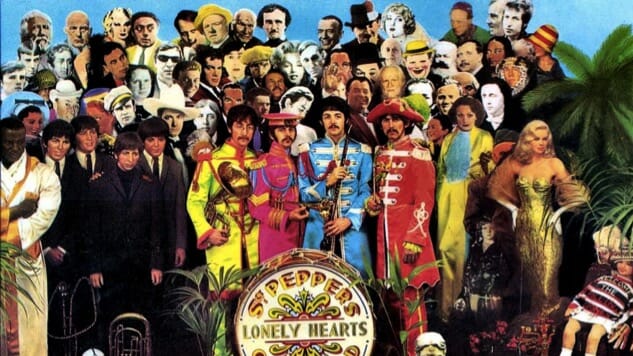
SPONSORED
In partnership with our sister site, Wolfgang’s, Paste now has more than 45,000 new and used vinyl records available. But whether you’re shopping from us or from your local indie record store, we know it can be tough to decide what to buy for that new turntable. Limited budget and limited shelf space means taking care when selected new additions to your growing collection. Then again, there are some albums that have endured for decades without wearing out on our ears. Here are 10 classic rock albums that every music fan should own on vinyl.
 10. Pink Floyd, The Wall (1979)
10. Pink Floyd, The Wall (1979)
The legacy of Pink Floyd was not cemented with just The Dark Side of the Moon. The Wall is one of the greatest concept albums of all time. It tells the tale of Pink, a troubled young man raised by an overprotective mother, who is trying to break down the wall in his mind that has been constructed by the authoritative figures in his life. It’s a painful story that most can relate to or at least comprehend, not only because so many have suffered similar pains in life, but because it comes from the story of a real person. Lead singer, bassist and founding member of the band Roger Waters wrote the album based on experiences in his own life. The themes that present themselves throughout the album stitch the story together, making a cohesive 26-track album. The tour that followed the album’s release took it to new heights, turning it into a rock opera. The psychedelic music that Pink Floyd so heavily influenced is present throughout the entire album. Pink Floyd and The Wall not only changed a genre of music, but music itself.—Clint Alwahab | Buy now for $10
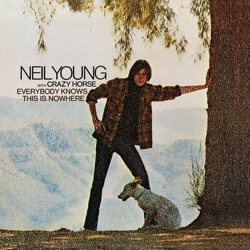 9. Neil Young, Everybody Knows This is Nowhere (1969)
9. Neil Young, Everybody Knows This is Nowhere (1969)
After the commercial success of the singer/songwriterly Neil Young, the iconoclastic rocker tore down everything he’d built with the fractious Everybody Knows This Is Nowhere. Built on long jams, jarring guitars and a sense of looseness that bordered on sloppy, there were few records as thrilling as the churning build of the 9:27 “Down By The River” or the ebb and flow of the 10:06 “Cowgirl In The Sand.” Crazy Horse was kerosene to Young’s spark, and Danny Whitten (guitar), Ralph Molina (drums) and Billy Talbott (bass) created a churning foundation for the songwriter to work against. From the opening blasts of “Cinnamon Girl,” it was obvious Young wanted to blaze; even on the more expected “The Losing End (When You’re On),” there was a brio that spoke to this newfound raucousness.—Holly Gleason | Buy now for $20
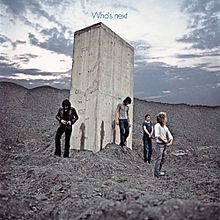 8. The Who, Who’s Next (1971)
8. The Who, Who’s Next (1971)
It’s kinda hard to believe Who’s Next, The Who’s rawest, most powerful and perfect album, came out in 1971. Barely out of the flowery 1960s (and fresh off their psychedelic—and cluttered—rock-opera, Tommy), guitarist-songwriter-vocalist Pete Townshend set to work on Lifehouse, a futuristic follow-up concept album so epic in its proposed scope, it made Tommy’s deaf-dumb-blind-pinball-playing narrative look meager by comparison. While Townshend’s outlandish ideas eventually got away from him, it worked out for the best: Who’s Next, a bastardized version of the original concept album, is hard rock’s definitive masterpiece, crammed top-to-bottom with classics like “Won’t Get Fooled Again,” “Behind Blue Eyes,” “Bargain,” “Baba O’Riley,” and, well, everything else.—Ryan Reed | Buy now for $22
 7. Sex Pistols, Never Mind the Bollocks, Here’s the Sex Pistols (1977)
7. Sex Pistols, Never Mind the Bollocks, Here’s the Sex Pistols (1977)
It would’ve been more shocking if the Pistols stuck around long enough to make a second LP. Every marketing gimmick has a shelf-life and the Pistols’ was particularly short. Bollocks is a musical Ouroboros, as its reputation has cycled from “dangerous salvation of rock ‘n’ roll” to “embarrassing cartoon” multiple times over since 1977. If you can ignore big sweeping statements and the misplaced notions of grandeur forced upon it you might be able to appreciate its relatively frills-free take on caustic rock ‘n’ roll recidivism. And hey, at least two people responsible were in on the joke, which is probably two more than The Police.—Garrett Martin | Buy now for $18
 6. Led Zeppelin, Led Zeppelin IV (1971)
6. Led Zeppelin, Led Zeppelin IV (1971)
It’s difficult to call Led Zeppelin IV the greatest “hard rock” album in music history—only because (in spite of its legacy) it’s much, much more than a “hard rock” album. Led, as always, by the black-magic mojo of guitarist-producer Jimmy Page, Led Zep truly indulged in 1971, branching out into extended progressive-rock (the sweeping, majestic epic “Stairway to Heaven”), medieval folk (the witchy “The Battle of Evermore”) and psychedelic balladry (the emotional centerpiece, “Going to California”), in addition to their trademark electrified blues (“Rock and Roll,” “Black Dog,” “Four Sticks,” “When the Levee Breaks”). Eight tracks, eight classics: It’s one of the greatest rock albums ever recorded, whatever it is.—Ryan Reed | Buy now for $44
 5. Bruce Springsteen, Born to Run (1975)
5. Bruce Springsteen, Born to Run (1975)
After nearly 40 years of consistent veneration from critics and fans alike, there’s little left to say about Born To Run. In just eight tracks, Bruce and the E Street Band constructed a nearly perfect album—dynamic in its instrumentation, euphoric in its lyricism, contradictory in its youthfulness and maturity and iconic in its metaphors and imagery. From the first piano notes in “Thunder Road” through the soul-stirring saxophone solo that closes “Jungleland,” Born To Run captured the collective mindset of a generation and perpetuated it through many more. —Hilary Saunders | Buy now for $18
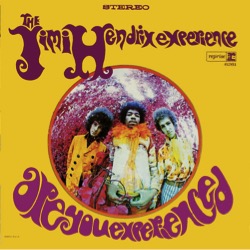 4. The Jimi Hendrix Experience, Are You Experienced? (1967)
4. The Jimi Hendrix Experience, Are You Experienced? (1967)
As his all-too-brief recording career bloomed and wilted, sonic virtuoso Jimi Hendrix grew into his role as a recording studio visionary, helping change perceptions of what a rock song could sound like. He perfected his blend of psychedelic songwriting and wizard-like electric guitar flourishes on 1967’s Axis: Bold as Love, but on Are You Experienced?, his debut album with The Experience (drummer Mitch Mitchell, bassist Noel Redding), he harnessed the sound of a raw, thrilling power trio at the peak of its power. “Foxy Lady” has one of the downright nastiest riffs ever recorded, and “Fire” is the most appropriately titled song in rock history.—Ryan Reed | Buy now for $15
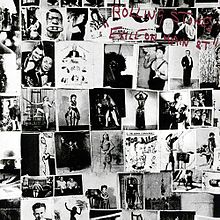 3. The Rolling Stones, Exile On Main St. (1972)
3. The Rolling Stones, Exile On Main St. (1972)
Listening to Exile on Main St. hardly creates a sense of highly-crafted musicianship or fine-tuned production. If you read into the history of the The Rolling Stones’ 12th album, it adds to that notion—Mick Jagger is galavanting throughout the French countryside with his soon-to-be wife while Keith Richards is drugged out on heroin. The band struggled to get all of its members to show up for recording sessions day-in and day-out. Out of this period from 1968-1972 emerged an unpolished realism that ebbs and flows throughout Exile, in which The Stones perfected the art of imperfection, basking in their humanity and all its accompanying honesty. There’s an abundance of triumphant moments within these 18 songs, but the transcendence occurs when the band juxtaposes good and the bad, the flawed and flawless. In doing so, The Stones cap off a golden four-album run, exhibiting the band at the peak of their country-gospel greatness.—Max Blau | Buy now for $30
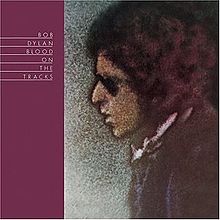 2. Bob Dylan, Blood on the Tracks (1975)
2. Bob Dylan, Blood on the Tracks (1975)
With good reason, Bob Dylan is most revered for his nearly unparalleled streak of legendary albums in the 1960s (including 1963’s The Freewheelin’ Bob Dylan, 1965’s Highway 61 Revisited, and 1966’s Blonde on Blonde), but he saved arguably his finest album ever until 1975, making one of rock ’n’ roll’s most jaw-dropping comebacks with the striking, emotional Blood on the Tracks. Despite being recorded in a ridiculous 10 days (barring a last-minute re-tracking of a few songs), the album remains Dylan’s warmest, richest recording—loads of purring organs, shuffling acoustics, and soulful rhythm sections. But as always with Dylan albums, it’s the words that steal the show, particularly on the bitter epic “Idiot Wind” and the haunting, uplifting “Tangled Up in Blue.” Rock’s most critically acclaimed troubadour kept on releasing wonderful albums after Blood on the Tracks—but he never topped it.—Ryan Reed | Buy now for $25
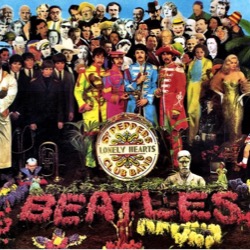 1. The Beatles, Sgt. Pepper’s Lonely Hearts Club Band (1967)
1. The Beatles, Sgt. Pepper’s Lonely Hearts Club Band (1967)
In a decade defined by sweeping cultural paradigm shifts, The Beatles’ music helped the world’s youths make sense of the changing times around them. The Fab Four’s golden years took place from approximately 1965-1969, during which they transformed themselves and continually progressed on the grandest of scales. As John Lennon, Paul McCartney, George Harrison and Ringo Starr went from delightful hand-holding mop-tops to psychedelic luminaries, they offered a way for the world to understand the complex and radical changing of the guard. While it could be said that The Rolling Stones were the purest rockers, The Beach Boys were the more innovative group or that Dylan was the lyrical visionary of his era, no other band had defined their generation like The Beatles. For all intents and purposes, the arguments made for ‘the best album of the 1960’s’ and ‘the greatest Beatles album’ are one in the same. Cases could be made for Rubber Soul, Revolver, The Beatles (White Album) or Abbey Road to claim this spot. No record, however, quite encapsulates The Beatles and what they represented the way that Sgt. Pepper’s Lonely Hearts Club Band does. Falling in the middle of their fruitful, mid-’60s run, The Beatles continued Revolver’s experimental production techniques, sprinkled in lyrics that ranged from everyday life to drug usage, and combined genres including infectious pop, traditional Indian music and straightforward rock ‘n’ roll. Like the album’s iconic artwork, the group’s music offers a brilliant and spontaneous sonic hodgepodge, cohesively sewn together and perfectly soundtracking the ever-changing times of the 1960s.—Max Blau | Buy now for $26